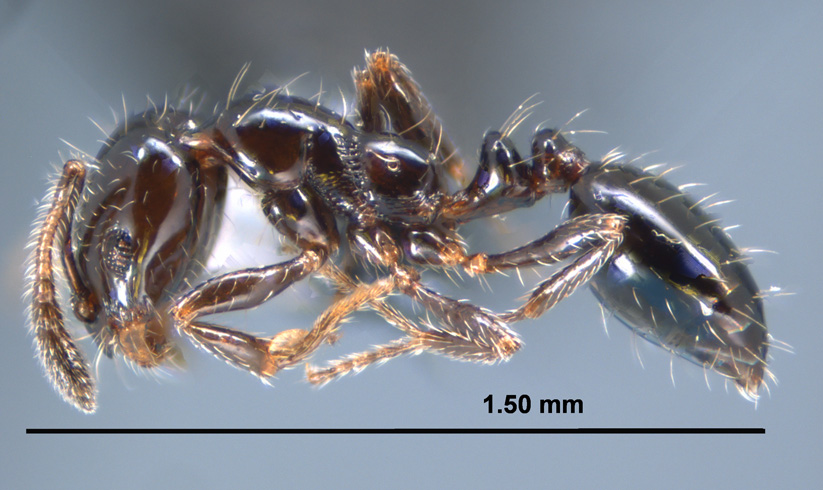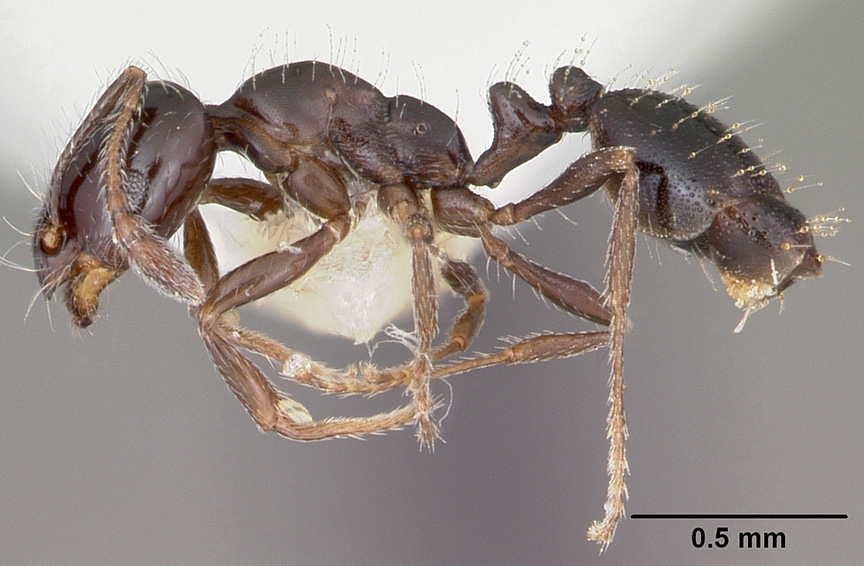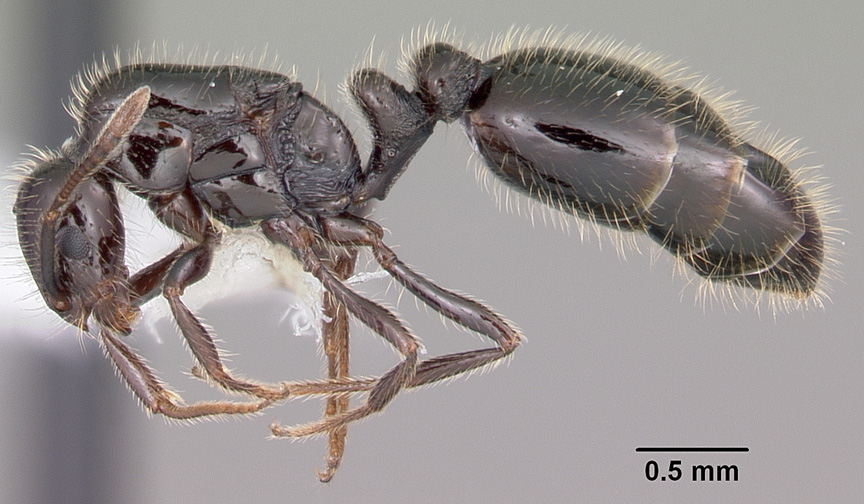Introduction
Monomorium Mayr, 1885 is an extremely diverse genus worldwide with most of its diversity occurring in the old world tropics with 10 species currently listed for North America (Bugguide.net). These ants occupy various types of habitats from bare lands to well developed forests with most foraging occurring on the ground.
Taxonomic History
Myrmica (Monomorium) minima Buckley, 1866: 338 (w.q.) U.S.A. Nearctic. Emery, 1895d: 274 (m.); Wheeler & Wheeler, 1955c: 122 (l.); Crozier, 1970a: 116 (k.). Combination in Monomorium: Emery, 1895d: 274. Subspecies of Monomorium minutum: Emery, 1895d: 274; Wheeler, 1904f: 301; Wheeler, 1906g: 2. Revived status as species: Wheeler, 1910a: 562; Wheeler, 1913d: 115; Wheeler, 1914c: 42; Dennis, 1938: 279. Senior synonym of Monomorium atra: Emery, 1895d: 274; of Monomorium metoecus: Brown, in Ettershank, 1966: 90. See also:Wheeler & Wheeler, 1973a: 30; DuBois, 1986: 76.
Identification
Monomorium sp. can be identified by the presence of a petiole and post-petiole, 12 segmented antennae with a three segmented club, raised medial area on the clypeus with fine longitudinal ridges and the lack of propodeum armament.
Worker: can be identified by having an antennal club with segments successively increasing in length; mostly smooth head and thorax; length of propodeal declivity being shorter than propodeal dorsum; post-petiole node about as high as long with the petiole being distinctly shorter than the base of the post-petiole node; blackish in color. The workers vary little in size.
Queen:
Male:
Biology and Economic Importance
Monomorium minimum have polygynous colonies and only one worker caste. Also called the “little black ant” and are not a big pest species. They can infest homes and have rapid colony growth due to the presence of multiple queens in one colony. M. minimum are omnivorous foragers that can inhabit a variety of locations and have been known to forage inside houses for food. Their small sizes enable them build colonies in small nooks and crevices like cracks in cement, soil, and logs. Colonies produce winged queens and males that form mating swarms in June and August.
Distribution
Native Range: North America and the Gulf of Mexico
U.S. Distribution: Found across the continental U.S.
Acknowledgments
Funding for the ant work being done by the MEM in Alabama and Mississippi is from several sources including the National Institute of Food and Agriculture, United States Department of Agriculture, under Project No. MIS-012040, the Mississippi Agricultural and Forestry Experiment Station at Mississippi State University, with support from State Project MIS-311080, NSF Grants BSR-9024810 and DFB-9200856, the Tombigbee National Forest (U.S. Forest Service), the Noxubee Wildlife Refuge, Mississippi Natural Heritage Program Research Grant, USDA Forest Service Agreement No. 08-99-07-CCS-010, the William H. Cross Expedition Fund, and primarily by the USDA-ARS Areawide Management of Imported Fire Ant Project. Additionally, special cooperation has been provided by State Parks, National Forests, National Wildlife Refuges, the Natchez Trace Parkway, and from various private landowners in both Alabama and Mississippi.
Literature Cited
Links
AntWeb
Antcat
Antwiki |







